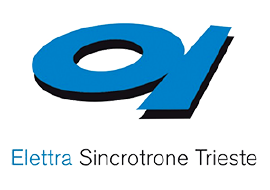Proximity-induced ferromagnetism and chemical reactivity in few-layer VSe2 heterostructures
Among transition-metal dichalcogenides, mono and few-layers thick VSe2 has gained much recent attention following claims of intrinsic room-temperature ferromagnetism in this system, which have nonetheless proved controversial. Moreover, it remains an interesting open question if ferromagnetism can be coupled into the system, for instance by proximity to a magnetic overlayer.
In this work, we explore the use of such magnetic proximity coupling VSe2 monolayers with a Fe overlayer. In our study, based on x-ray absorption spectroscopy (XAS), x-ray magnetic circular dichroism (XMCD), and photoemission spectroscopy (PES), we focus on two aspects: (i) the magnetic state of VSe2, both as bulk and MLs, and (ii) the chemical stability and/or chemical modifications occurring at the Fe/VSe2 interface. XAS, XMCD, and PES measurements were performed at APE-HE beamline, with additional PES and ARPES measurements at I09 beamline at Diamond Light Source (UK).
The XAS spectra at VL2,3 edges taken on both bulk and MLs VSe2 films present a 4+ state. Regarding the magnetic behavior of VSe2 before Fe deposition, no sign of dichroic signal was detected on any of the samples confirming what was previously reported. After the 2-nm Fe deposition, VSe2 sample presents a general shift of V L2,3 edges towards lower energies compared to the pristine case, together with a smoothening of the L3 pre-edge features.
Regarding the XMCD, in the case of the Fe/2D-VSe2 heterostructure a clear asymmetry peak is measured, with an intensity of 2.3% of the monolayer case. Correspondingly, Fe presents a dichroic signal of 23%. V and Fe dichroic signals are opposite in sign, indicating an antiparallel coupling in the film plane. This was confirmed by element sensitive hysteresis loops on both V and Fe edges, at room temperature and at 100 K.
Concerning the chemical reactivity at Fe/VSe2 interface, we did element sensitive depth profile of the Fe (0.5 nm) / VSe2 interface, by means of angular dependent PES measurements. These data show that, while we can consider Fe stably confined on top of the monolayer and V below the deposited Fe layer, Se shows a tendency to segregate from the 2D-VSe2 and migrate towards the surface, thus inducing the metallization of V.
Our results show that the chemical stability of ML-VSe2 upon deposition of a metallic ferromagnetic layer may be partially
lost. In the meantime, the clear proximity-induced coupling at the interface between V and Fe motivates us to further explore different ferromagnetic/2D-TMDC heterostructures.

CONTACTS
Giovanni Vinai
Piero Torelli
Giancarlo Panaccione
Phil King - pdk6@st-andrews.ac.uk




